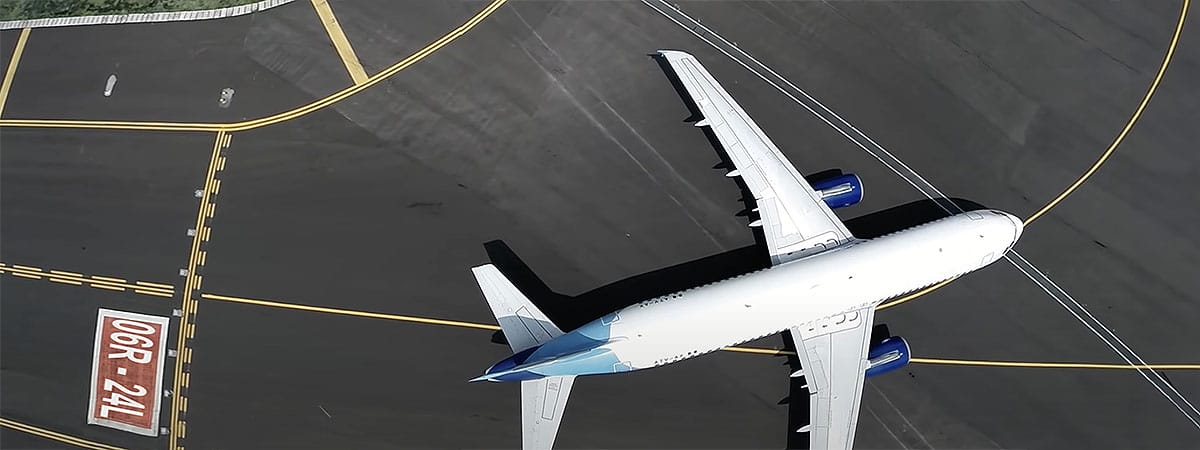Aviation decarbonisation is a goal assumed by the entire aviation industry, affecting all its facets. From advancing toward more efficient infrastructures, procedures and airport services, to optimising aircraft and propellants, to more efficient air route management, it all adds up in service of achieving that goal.
Nonetheless, we need to be aware that this is a complex global challenge with many economic and social implications, the reason why we cannot provide solutions that are simple, local, or merely politically motivated.
In the last few years, the aviation industry has reduced its carbon footprint much more than any proposed external measure.
One of the initiatives that has been considered recently in this sense regards abolishing or reducing short-distance flights. While the measure is appealing, it is more symbolic than effective. Rigorous analysis demonstrates many weaknesses and, importantly, that it does not resolve the deeper issue.
The trailblazing country in this kind of measure has been France. In the context of the Climate Act of 2021, provisions were included to discourage short-distance flights in favour of more sustainable alternatives like trains. One of the key measures was prohibiting domestic flights on a route where there is a train lasting less than 2.5 hours. There are exceptions, however, for flights connecting to international airports or in cases of “territory connections.” Even though France is a country with a highly complete and well-structured transit infrastructure, the measure only affected three routes, 2.5% of domestic flights, representing 3% of passengers. For the purposes of carbon emissions, the reduction was symbolic (0.9%). In fact, that figure is quite below what the aviation industry itself has been able to reduce through innovation, development and best practices.
In terms of short-distance flights, we must remember that these kinds of flights have positive economic and social effects in the regions they serve, which also should be considered:
Positive impact on tourism: Short-distance flights facilitate tourism as it is easier and faster for people to travel to a particular region. This has a direct impact on the economy associated with accommodations, restaurants, recreational activities and local commerce.
More equal business connectivity: These kinds of flights facilitate business trips and corporate cooperation, allowing people to quickly move between cities and regions. This entails investment, trade and collaboration between companies throughout the territory, essential factors to driving economic growth and creating employment.
Niche economy: The airports providing short-distance flights themselves are centres of economic activity, regional development and job creation in services associated with aviation.
Effective access to global markets: Short-distance flights enhance local business’ access to and competitiveness in a wider market, as they facilitate movement, freight transport and participation in international trade events.
Similarly, the elimination or reduction in short-distance flights may entail both direct and indirect costs (economic, labour, social, etc.), which are almost never mentioned. Let’s discuss a few of them:
Airlines, for instance, may incur direct costs due to a direct loss of earnings resulting from a reduction in or elimination of short-distance flights. Additionally, they would need to reorganise their structures and fleets to adapt to new routes, regulations and policies discouraging short-distance flights. This may entail a direct increase in ticket prices for passengers.
Having a real alternative to short-distance flights may require investments in railway and other alternative transport infrastructure projects to guarantee the availability of viable options that appeal to passengers. Let’s not lose sight of the fact that all of this also entails other impacts.
A reduction in short-distance flights may also have a negative impact on the local economy and tourism in affected regions, especially if these flights are an important part of the air connectivity of the region or if the region depends largely on domestic tourism.
Reducing the number of short-distance flights may also affect both direct and indirect employees of the aviation industry, which may require workforce retraining or support measures for people who lose their jobs as a result of reduced activity in the sector.
In short, we should assume that although reducing short-distance flights may have some environmental and economic benefits in the long term it may also involve significant impacts and costs, both for the airlines and for the regions affected.
The truth is that the aviation industry has spent many years working to achieve the goal of zero emissions by 2050. Reducing carbon emissions in aviation is a complex challenge requiring multifaceted, collaborative approaches, far beyond ostentatious but ineffective measures.
In fact, a great deal of progress has already been made toward this goal in a few key aspects of the industry:
A significant investment in research and development of the cleanest and most efficient technologies for airlines has already significantly reduced carbon emissions. This includes developing lighter, more aerodynamic and more advanced aircraft powered by more efficient engines.
Route and operation optimisation is another interesting path. Airlines’ improved operational efficiency reduces fuel consumption and, therefore, carbon emissions. This can be achieved by optimising routes, using more advanced navigation technologies, managing air traffic efficiently and implementing more sustainable operating practices.
Aviation biofuels, produced with renewable resources like agricultural crops, organic waste and algae, considerably reduce carbon emissions compared to fossil fuels.
We cannot forget to mention the modernisation of airport infrastructure, including the implementation of renewable energy systems, optimisation of fleet management and improvement of energy efficiency in buildings and equipment.
Levying carbon taxes, implementing emissions regulations and other economic mechanisms are also helping to incentivise airlines to reduce their carbon emissions and adopt more sustainable practices. We’re talking about setting emissions limits, establishing fuel efficiency standards and promoting investment in clean technologies.
Finally, we cannot fail to mention the need to undertake clear intermodal planning criteria for transport including encouraging sustainable alternatives.
In summary, reducing carbon emissions in aviation requires a combination of technological, operational, regulatory and political approaches addressing aircraft emissions and infrastructure as well as operations associated with the aviation industry.
Reducing or eliminating short-distance flights is a measure that has already been surpassed by the industry’s own actions and also entails certain tolls that we don’t need to pay. It’s possible that not all passengers will be willing to accept them once their true meaning is explained.



